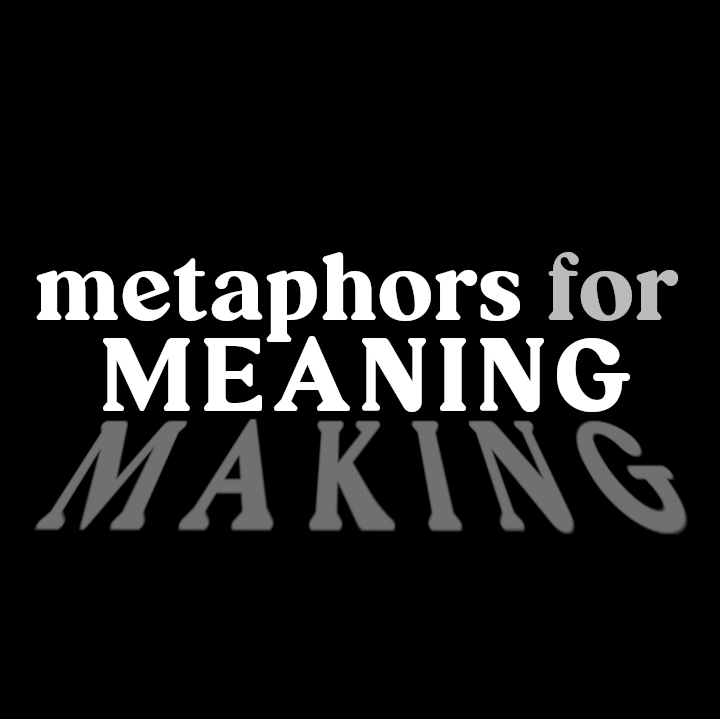I see metaphor everywhere. It’s how my creative brain works. I see a real concrete thing in the world and I immediately jump to equating it to an abstract idea or feeling or problem. Really I’m probably comparing it, but I like to lean into really equating the two things– like the lion and the man in the video below. Because when I see the two as one, I can then observe each one as something new. I experience them each differently even while I visualize the mashup.
I like that the simple video above that I stumbled upon differentiates simile and metaphor in this other way: that with a simile, you think about the difference or similarity between two things. But with a metaphor, you feel the difference or similarity.
We feel metaphors. But because my logical mind knows that the X does not actually equally the Y, then I can take the meaning I have gleaned or felt from the metaphor and move on to further meaning-making. Too often we stay in the “aha” of one metaphor, one equation or comparison, one story, one narrative. And what once gave us deeper understanding and perhaps led to an awakening, now leaves us stymied and stuck.
Everyday we take in the world around us–words and images, stories and lived experiences, texts and subtexts….and we make meaning of it all. And this meaning feeds who we are and how we treat one another in the world. Personally I think much of the conflict that exists throughout the world arises out of our meaning-making–or our making of different meanings of the same experience or observation or passed down narrative. I would argue that if we were better able to lean more into the fluidity of metaphor and less into literality–in all things–religion, politics, relationships…. we would be better able to move away from unhealthy and unproductive either/or (binary) thinking that pit communities against one another. Embracing the ability of a metaphor to allow us to hold two potentially incongruous ideas simultaneously enables us to better lean into both/and ways of thinking and being in the world. Leaning into metaphoric thinking allows us to not get tied to a particular world-view, but instead prepares us for making new comparisons, new connections, new discoveries.
When we hold onto a singular metaphor it can be to our downfall–individually and collectively. When we hold onto a singular metaphor, story, narrative, way of framing the world–then we stop making more meaning. And making meaning is what, to my mind, grounds us in our humanity. Keeps us moving and changing and adapting.
When we lean into metaphor, we allow for mystery while still holding on to reason. When we take a metaphor literally, we destroy both the mystery and the layeredness of meaning that the metaphor allowed.
What is a metaphor for? To help us make meaning.
This website landing place is an experiment. A way to share some of these thoughts. My hope is that the video pieces might be usable in virtual worship or in some other learning/thinking/feeling environment. Please feel free to be inspired by the metaphors and use them to further explain or explore ideas and beliefs and wonderments in yourself or within your community group. We all need all the inspiration we can get these days.
So here’s to meeting a metaphor here that inspires you to wonder, compare, lean in, and make ever more meaning.
